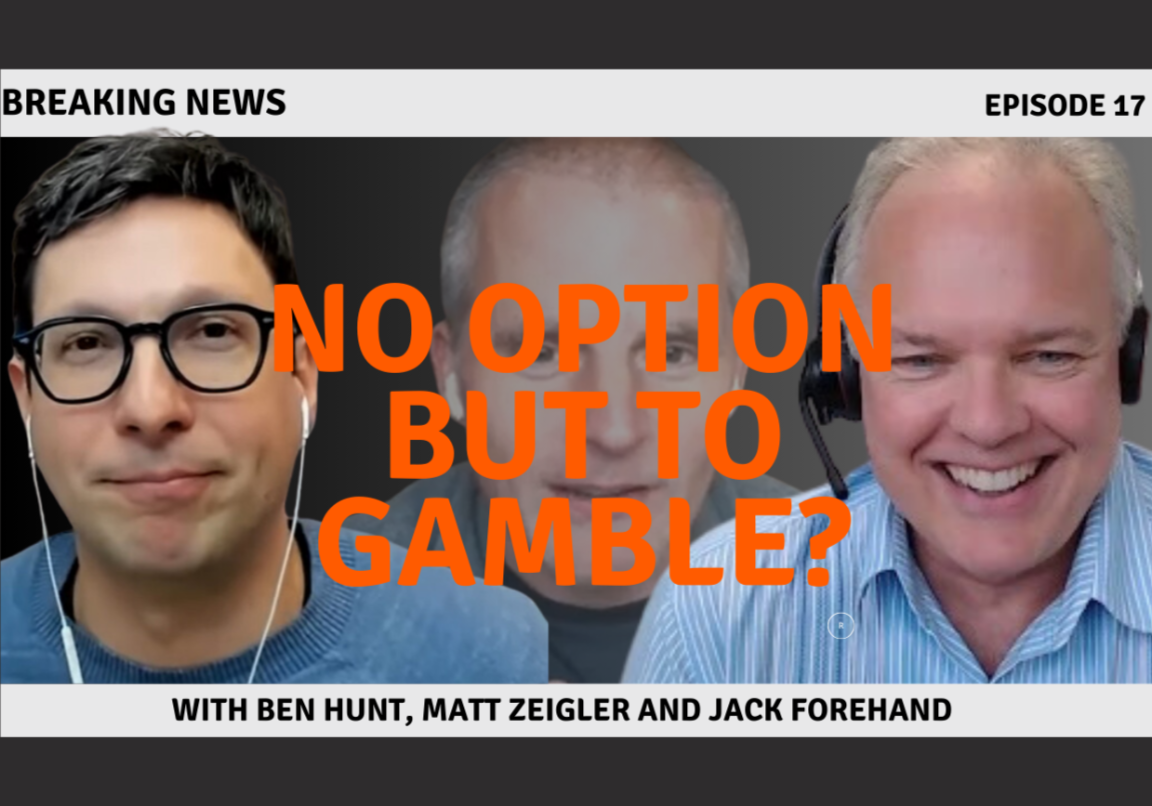Run, Run, Pass
To learn more about Epsilon Theory and be notified when we release new content sign up here. You’ll receive an email every week and your information will never be shared with anyone else.
Continue the discussion at the Epsilon Theory Forum
The Latest From Epsilon Theory
This commentary is being provided to you as general information only and should not be taken as investment advice. The opinions expressed in these materials represent the personal views of the author(s). It is not investment research or a research recommendation, as it does not constitute substantive research or analysis. Any action that you take as a result of information contained in this document is ultimately your responsibility. Epsilon Theory will not accept liability for any loss or damage, including without limitation to any loss of profit, which may arise directly or indirectly from use of or reliance on such information. Consult your investment advisor before making any investment decisions. It must be noted, that no one can accurately predict the future of the market with certainty or guarantee future investment performance. Past performance is not a guarantee of future results.
Statements in this communication are forward-looking statements. The forward-looking statements and other views expressed herein are as of the date of this publication. Actual future results or occurrences may differ significantly from those anticipated in any forward-looking statements, and there is no guarantee that any predictions will come to pass. The views expressed herein are subject to change at any time, due to numerous market and other factors. Epsilon Theory disclaims any obligation to update publicly or revise any forward-looking statements or views expressed herein. This information is neither an offer to sell nor a solicitation of any offer to buy any securities. This commentary has been prepared without regard to the individual financial circumstances and objectives of persons who receive it. Epsilon Theory recommends that investors independently evaluate particular investments and strategies, and encourages investors to seek the advice of a financial advisor. The appropriateness of a particular investment or strategy will depend on an investor’s individual circumstances and objectives.









I’m going to attempt a kindergarten-level analogy, hopefully not missing the point too badly:
If you look at a Coke can from one direction, it looks like a circle. If you look at it from another direction, it looks like a rectangle. There’s a group of people that is emotionally (or otherwise) invested in the belief that Coke cans are liable to roll away if you put them down. Another group is heavily into the idea that a can of Coke will stay where you put it.
One news source publishes an article consisting of a picture of a circle accompanied by text like “This is what a Coke can looks like, OF COURSE it will roll away, how else could it be? Have you ever seen a Coke can that WASN’T shaped like this?”
Another news source puts out an article with a picture of a rectangle and an analogous caption.
When I’m trying to make sense of the world, I call “Coke cans roll away” and “Coke cans stay where you put them” narratives, and I call pictures of circles and rectangles (the “raw data” you refer to in your note) “projections”, for lack of a better word. Low-dimensional projections of higher-dimensional phenomena.
Slightly more honest news sources would add to their stories information about the directions of view that led to their respective projections, and a well-read consumer could look at both articles and potentially assemble a more complete, nuanced idea of the shape of a Coke can.
Even more honest would be to include information about how each news source chose their viewing direction. But I think that’s an awful lot to hope for in the real world.
If I asked you to point to your knee you could do so instantly and wordlessly, but if I asked you to point to the economy, for example, the closest you could come is using a bunch of linguistic symbols to point to a group of concepts. To show me the economy, you’d have to tell me a story. There’s not even a “you” anywhere to be found, because it turns out that that’s made of narrative, too.
Control the narratives of economics and commerce, and you control economics and commerce. Control the narratives about politics and government, and you control politics and government.
Perhaps the cracks that are appearing all over official narratives today are like the first cracks appearing in an eggshell as a bird begins to hatch into the world.
“Mostly, the Maginot Lines we build for ourselves are symbols. Sure, they can be real enough. All those forts and gun emplacements along the Franco-German border were certainly real enough. They even impacted strategic decision making. But our opponents aren’t obligated to act according to the caricature we’ve drawn. They can choose another axis and mode of advance–one that plays to their true strengths and weaknesses. Sound strategic thinking assumes they will. “
— Demonitized
Yes! classic example of this is the elephant parable - different blindfolded groups without knowledge of what an elephant is approaching a different part of the creature and drawing their conclusions from it.
Completely data-driven.
Whether it’s news, research or our own analysis, however, the tricky part is what we ought to expect from others and from ourselves. It’s not realistic that anyone is ever going to provide us the complete picture of relevant facts, because it’s not possible for them to know it either. That’s why I think that some of the diversity-seeking in methodology and priors must fall to us. But even then, humility with respect to our models can never be abandoned.
“They had to settle for a field goal.” Every time I hear this, I wonder if kicking a field goal earlier would optimize over settling for a fumble (or interception). Maybe a quant could figure it out. Please, just one time football gods: “They settled for a fumble!”
Or, more accurately in the case of the Seahawks last four games, run, run, sack.
Sigh…
Just a little follow up: late in the Saints/Eagles game with the Saints up by 6, the Saints could have iced the game with an incredibly likely field goal. Instead, they (as is typical) pressed on for more yardage which resulted in a giant sack and subsequent missed field goal. Only then did the ‘almost immaculate’ interception turn the game back to the Saints for the win. What followed was glowing praise for the magnanimity of Foles instead of the obvious criticism of the Saints for not taking the field goal win on second or third down. Instead they settled for a sack and possible loss.
Everybody knows Sir John Templeton said the secret to his investing success was that he almost always “sold too soon”! I bet he would never have settled for a ‘fumble’!
RRP(P) is predictable - most certainly the cause of fan frustration. “Keep 'em guessing” is the key to almost any reasonably matched competition. It resides in the notions of randomness (reality) and expectation (mine or their’s). Poker players would make good investors if they weren’t also gamblers.
The best poker players aren’t usually gamblers. For them its all about Expected Value and edge exploitation (See Borgata v. Phil Ivey - https://www.courthousenews.com/wp-content/uploads/2016/12/ivey.pdf ). Most of them won’t bother playing any other games in the casino (as they are all EV negative for the player).